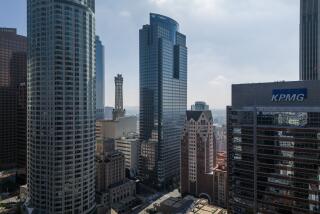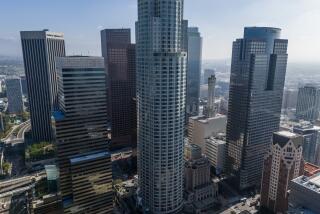City May Hold On to Power Station
- Share via
To bolster Los Angeles’ energy supply, City Council members are considering reneging on a deal to sell the city’s stake in the coal-burning Mohave electrical generation station, although ownership will require lawmakers to spend millions to clean up the plant.
The council will decide next week whether to retain 10% control of the facility known for spewing smoke across the Nevada desert and into the Grand Canyon.
Although a few council members say the city should divest itself of the heavily polluting plant, the acting head of the Department of Water and Power and the council’s chief legislative analyst have warned lawmakers that Los Angeles needs to keep a stake in the facility--at least until it secures holdings in other plants--to avoid a local energy shortage.
City officials’ reassessment comes as state officials are predicting that California will soon move from an energy shortage to a huge power surplus. The Department of Water Resources recently analyzed California’s long-term contracts with energy companies and projected an oversupply so large that in the next nine years consumers could pay as much as $3.9 billion for power that wasn’t needed.
Although Los Angeles could purchase some of the state’s surplus electricity, a top city official said it’s better to keep Mohave--and spend the $75 million to reduce the pollution it emits--than depend on an outside energy source.
“If there is anything we have found in the energy crisis, it is that being independent and being able to control one’s own destiny is a very powerful economic tool,” said Chief Legislative Analyst Ron Deaton.
The DWP is a utility owned and operated by Los Angeles, with an extensive network of power plants.
As much of the state suffered rolling blackouts and rate increases last winter, Los Angeles was largely unaffected and the DWP made tens of millions of dollars selling its surplus.
Deaton said that at times this summer, the Mohave plant was helpful in preventing blackouts in Los Angeles. Currently, the city owns 20% of the plant located along the Colorado River. Southern California Edison owns a 56% equity share, while energy giant AES owns 10% and Salt River Project owns 14%.
The council voted in August 2000 to sell the city’s interest in the plant as part of DWP’s 10-year plan to restructure Los Angeles’ power supply to dramatically reduce its dependence on older, costlier and more polluting plants.
At the time, David Freeman, then head of the DWP, told city lawmakers that it would be better to sell the plant than to spend the money needed to address a lengthy list of environmental concerns.
But then the state energy crisis hit, and city officials decided that it would be better to hang onto all reliable sources of power. At the urging of then-Mayor Richard Riordan, the sale was placed on hold.
Under the plan set for council consideration Tuesday, the city would sell half of its share to Salt River Project and keep half. The majority of the council has already given initial support to the proposal.
“Those who own the power win the game,” said Councilwoman Janice Hahn, a former Edison employee. “We must, at all costs, particularly now, hold on to any power that we own. And while I feel badly that we’re part of the dirtiest power plant, this is an opportunity for us to be part of cleaning it up.”
Council members Ruth Galanter and Eric Garcetti argued that the city should divest itself of the plant and find cleaner energy sources.
“I think it comes down to whether we want to take our power at the expense of somebody else’s environment, or whether we’re willing to put up with the inconvenience and the effort that it takes to conserve here at home,” Galanter said at a meeting earlier this week.
Garcetti added: “Do we want to be Los Angeles, the folks who are selling the dirtiest power in the country? Councilwoman Hahn is right. Those people who own power win. Well, we can own different sorts of power.”
More to Read
Sign up for Essential California
The most important California stories and recommendations in your inbox every morning.
You may occasionally receive promotional content from the Los Angeles Times.










